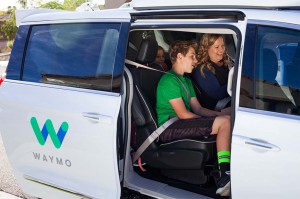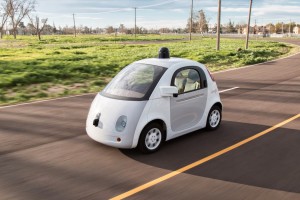As Waymo, formerly known as Google’s autonomous vehicle program, continues to develop its self-driving vehicles, it’s clear that one part of the program won’t carry on: the Firefly, also known as Google’s “little marshmallow car” or a dozen other nicknames.
The company announced it plans to retire its fleet of “Fireflies,” the actual name of the quirky looking cars, instead focusing its fleet of Chrysler Pacifica minivans for further development.
The small two-seat egg-shaped car introduced many to the idea of a self-driving car. In fact, the company took a legally blind passenger in Austin, Texas, on what it claimed was the world’s first actual autonomous trip.
Waymo’s Lead Industrial Designer YooJung Ahn and Lead Systems Engineer Jamie Waydo described the Firefly as a “platform to experiment and learn” in a blog post.
(GM hits the road with new fleet of 130 fully autonomous Bolt EVs. Click Here for the story.)
“Now that we’ve moved to our next phase – letting members of the public use our self-driving cars in their daily lives – we’re ready to retire our fleet of Fireflies and focus on integrating our latest technology into vehicles like our new self-driving Chrysler Pacifica minivan,” according to the post.

Waymo recently began offering a free autonomous ride-share pilot program in Phoenix using its Chrysler Pacifica minivans for real-world testing.
Earlier this year, Fiat Chrysler and Waymo announced a deal that saw FCA provide 500 hybrid Pacifica minivans to Waymo for driverless testing, in addition to the 100 it already had. By retiring the Firefly, Waymo is clearly focusing on using a more contemporary vehicle for its real-world testing.
“By focusing on mass-produced vehicles like the Pacifica minivan, we’ll be able to bring fully self-driving technology to more people, more quickly,” Ahn and Waydo wrote. “The Pacifica minivans are equipped with our latest generation of custom-built radar, lidar and visions systems and an all-new AI compute platform, so they can see even further and sharper.”
The Firefly had limitations, such as a top speed of 25 mph. It also lacked a steering wheel, brakes and a gas pedal, which are now required by law for on-road testing in most of the states where real-world testing is legal.
(Click Here for more on Apple’s Tim Cook revealing the company’s automotive plans.)
While Waymo officials haven’t officially declared if they are giving up on the idea of building their own vehicle in favor of partnering with an established automaker this appears to reveal their ultimate direction. Another tech giant in the space is playing it close to the vest.
Apple CEO Tim Cook recently confirmed that the company was developing an autonomous vehicle system, but when it came down whether they were going to be a supplier or a manufacturer, Cook hit the brakes.
“We’ll see where it takes us,” he told Bloomberg News.
(To see how the “passenger economy” will grow to $7 trillion by 2050, Click Here.)
In the interim, GM rolled out its second-generation fleet of autonomous Bolt EVs in metro Detroit yesterday. The company will test the vehicles in Michigan, California and Arizona. The new versions join an existing fleet of 50 vehicles in the development stage.

